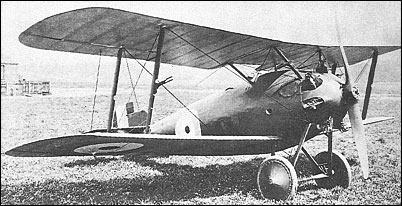|
| In October 1917, the A.B.C. Wasp seven-cylinder radial
air-cooled engine was considered to offer much
promise, and on the 31st of that month Sopwith was invited
by the Air Board to tender designs for a single-seat
fighter utilising that power plant. Four prototypes
were ordered, these being of conventional construction,
and, on 23 November, the company was asked to
build two additional prototypes with plywood monocoque
fuselages. In view of its intended function adoption
of the name Snail for the new single-seater was
bizarre, this being approved on 16 February 1918.
Powered by a 170hp Wasp I, the first prototype Snail
was completed in April 1918, this having negative wing
stagger and fabric skinning for its circular-section fuselage.
Intended armament comprised two synchronised
7.7mm machine guns, a third weapon of
similar calibre being mounted above the wing centre
section, to starboard of the cut-out. The remaining
three prototypes of conventional construction were not completed, the next Snail to fly being the first of the two
with plywood monocoque fuselages and positive wing
stagger. On 9 May, the monocoque Snail was sent to
Martlesham Heath for official trials, the reports being
less than complimentary about its manoeuvrability and
low-speed control. When, in October 1918, it was
decided to abandon the Wasp engine, further work on
the Snail was terminated, the second monocoque prototype
being discontinued before completion.
 | A three-view drawing (1280 x 932) |
| WEIGHTS |
| Take-off weight | 871 kg | 1920 lb |
| Empty weight | 630 kg | 1389 lb |
| DIMENSIONS |
| Wingspan | 7.72 m | 25 ft 4 in |
| Length | 5.79 m | 19 ft 0 in |
| Height | 2.39 m | 8 ft 10 in |
| Wing area | 21.24 m2 | 228.63 sq ft |
| PERFORMANCE |
| Max. speed | 185 km/h | 115 mph |
| Klaatu, e-mail, 25.04.2011 00:17 Ordered in competition with the B.A.T. Basilisk and Westland Wagtail. The Wagtail was considered the best of the three. However, all three were eventually abandoned due to the failure of the unreliable ABC Wasp radial engine. reply |
|
Do you have any comments?
|
| 
COMPANY
PROFILE
All the World's Rotorcraft
|







